
Japan's nuclear nightmare worsened on Wednesday with radiation levels surging at a quake-crippled reactor at Fukushima plant, forcing authorities to briefly pull out emergency workers even as another fire erupted slowing desperate efforts to avert a meltdown.
With the crisis appearing to be going beyond control, Japan's Emperor Akihito in a rare address to the nation said he was deeply worried over the developments in the aftermath of the last Friday's massive earthquake of 9.0 magnitude and tsunami.
"I sincerely hope from the bottom of my heart that people will, hand in hand, overcome these difficult times by treating each other with compassion," said the 77-year-old emperor who for the first time appeared in a video message.
Click on NEXT to see more PHOTOS...

About 50 employees were believed to be working at the reactor No.3 at the plant, 220 km north of Tokyo, to avert a meltdown when the radiation levels surged suddenly.
The government's nuclear safety agency said the radiation levels briefly reached 10 millisievert per hour at the plant's entrance at 10:40 am local time, but added that it was possibly due to radioactive substances emitted from the No. 2 reactor.
Authorities were also considering spraying boric acid by helicopters to prevent spent nuclear fuel rods at another troubled reactor, No.4, from reaching criticality again, restarting a chain reaction, Kyodo news agency reported.

Around 730 workers were evacuated from the site on Tuesday following hydrogen explosions at the reactors, according to Tokyo Electric Power Company (TEPCO), the operator of the plant.
The remaining employees at the Fukushima Daiichi plant were withdrawn on Wednesday following the sudden rise in radiation levels, Chief Cabinet Secretary Yukio Edano told media persons.
The work was suspended temporarily at the plant, where an estimated 70 per cent of the nuclear fuel rods have been damaged at the No.1 reactor and 33 per cent at the No.2 reactor.
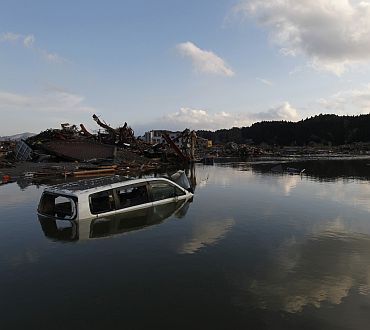
"Workers cannot carry out even minimal work at the plant now. Because of the radiation risk, we are on standby," Edano said.
The cores of both reactors are believed to have partially melted with their cooling functions lost in the wake of Friday's magnitude 9.0 earthquake and massive tsunami that have left over 11,000 people dead or unaccounted for.
At the No.2 reactor, the pressure-suppression chamber connected to its containment vessel was damaged following an explosion on Tuesday.
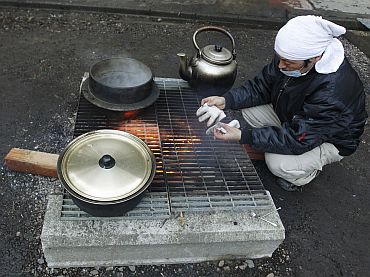
Adding to the concerns, a fire broke out again at the No.4 reactor, which was already posing the risk of leaks of high-level radioactive material, but flames were no longer visible about 30 minutes later, according to TEPCO.
An estimated 70 per cent of the fuel rods have been damaged at the No.1 reactor and 33 per cent at the No.2 reactor, TEPCO said.
The No.3 reactor was, however, drawing more attention after live TV footage of the plant showed white smoke coming out around 10 am local time, Kyodo reported.
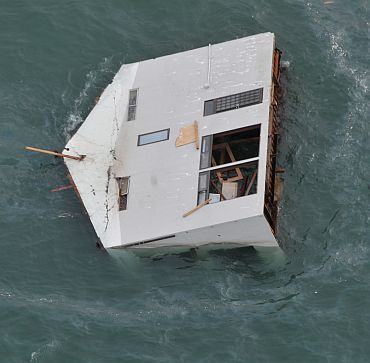
"There is a possibility that the No.3 reactor's containment vessel is damaged," Edano said, indicating that radioactive steam may be spreading outside.
He, however, said the government had no plans to expand the evacuation area of within 20 kilometers from the plant for now. The plant has six reactors.
Struggling to deal with the impending fallout of high radiation levels, people in the quake-tsunami hit northeastern coast also have to grapple with no electricity and water while coping with freezing cold.
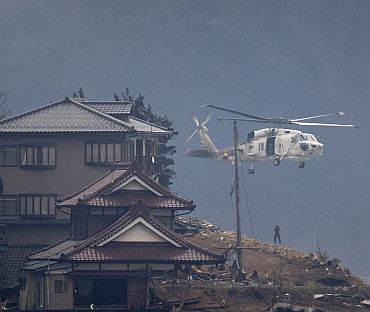
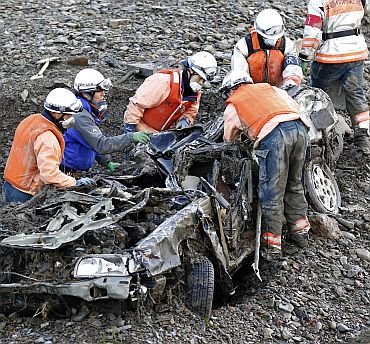
An estimated 7,843 people remained unaccounted for in six prefectures, the officials said, adding The death toll, however, is likely to climb.
However, BBC said that in the north-eastern town of Otsuchi alone, the fate of half of the population -- of about 8,000 people -- remains unknown.
Some 530,000 people have been staying in more than 2,600 shelters, prompting the severely-hit prefectural governments of Iwate, Miyagi and Fukushima to request Japan Prefabricated Construction Suppliers and Manufacturers Association to build 32,800 temporary housing in total, Kyodo said.
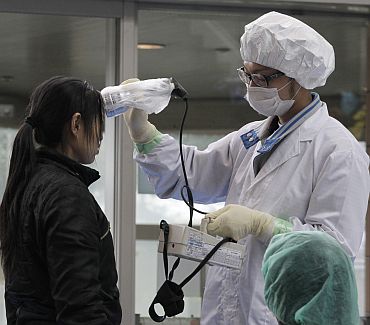
Immigration authorities, meanwhile, decided to provide information on foreign nationals staying in Japan, including on their fingerprints, if necessary, to local governments to check their whereabouts or identify them.
The Justice Ministry's Immigration Bureau also said it has decided to accept inquiries on whether foreign nationals who had been staying in the quake-hit Aomori, Iwate, Miyagi and Fukushima prefectures had left the country, to help their families and friends know about their fate. Inquiries can be made by telephone, fax or e-mails.
In a bid to cover an acute electricity shortage, TEPCO carried out rolling blackouts for the third consecutive day by cutting off electricity in the Tokyo vicinity.
Aftershocks also continued to rock Japan, with a strong quake with a preliminary magnitude of 6.0 jolting Tokyo and its vicinity.